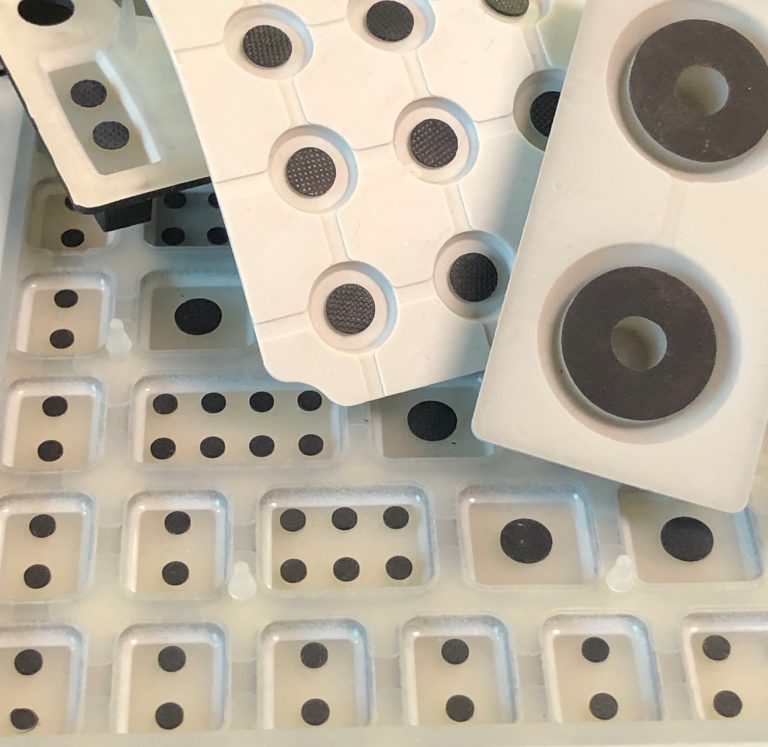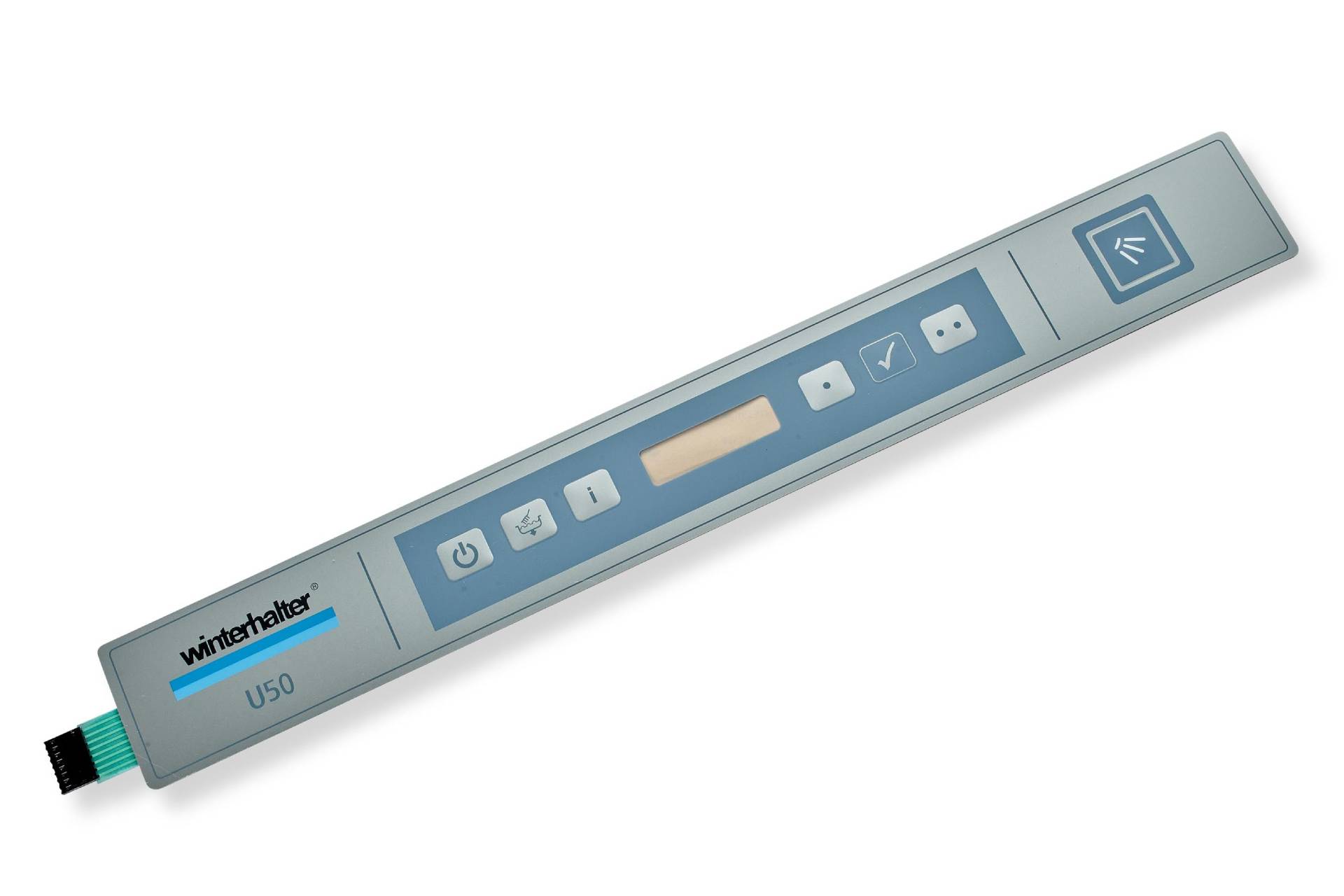How Rubber Keypads help create ergonomic interfaces
A Comprehensive Guide to the Production and Processing of Rubber Keypads for Optimal Performance
The manufacturing and processing of rubber keypads play a vital duty in their efficiency and functionality. Material selection, design accuracy, and advanced manufacturing techniques substantially impact their resilience and effectiveness. Recognizing these elements is crucial for developing high-grade products. As numerous innovations arise in this area, discovering their ramifications can reveal new criteria for performance and individual experience. What crucial aspects will form the future of rubber keypads?
Understanding Rubber Keypads: Materials and Types
Rubber keypads are important components in countless gadgets, offering an equilibrium of durability and tactile comments. These keypads are largely made from silicone or artificial rubber, products picked for their flexibility and strength. Silicone rubber, in particular, is favored for its superb temperature resistance and longevity, making it optimal for numerous applications, from customer electronic devices to industrial equipment.
There are numerous sorts of rubber keypads, including dome button keypads, which make use of a dome-shaped system that provides tactile responses when pressed. In addition, there are additionally flat keypads, which feature a smooth surface and are typically made use of in remotes and medical gadgets. The option of material and kind influences the keypad's performance, really feel, and general user experience. Understanding these elements is important for suppliers and developers intending to develop reliable and reliable interfaces in their items.
The Production Refine: From Style to Manufacturing
The manufacturing procedure of rubber keypads includes a number of vital stages, starting with design and ending with production. Initially, designers produce in-depth specs and prototypes, guaranteeing the keypad satisfies practical and aesthetic requirements. Computer-aided design (CAD) software program is frequently utilized to picture the design and attributes before proceeding.
When the design is settled, product option is necessary, with alternatives usually including silicone or all-natural rubber. In the following stage, mold and mildews are developed based on the approved designs, which will certainly form the keypads during production.
Adhering to mold and mildew creation, the manufacturing phase starts, where rubber is combined with ingredients to enhance performance. The blend is after that poured into molds and subjected to warm and pressure, allowing it to strengthen and cure.
Lastly, the completed keypads undergo high quality checks to verify they meet well established criteria, followed by product packaging for circulation. This all-inclusive process warranties peak efficiency in the end product.
Trick Techniques in Rubber Molding
In the domain name of rubber keypads, various molding techniques play a crucial function in determining the quality and capability of the end product. One common technique is compression molding, where raw rubber is placed in a heated mold and mildew and stress is applied, enabling efficient mass manufacturing and harmony. Another substantial technique is injection molding, which involves injecting warmed rubber into a mold, providing better accuracy and complex shapes. Transfer molding, a crossbreed of both approaches, is also utilized, particularly for intricate designs, as it integrates the advantages of both processes. Furthermore, liquid silicone rubber (LSR) molding is obtaining traction due to its adaptability and longevity, making it perfect for high-performance applications. Each method possesses unique qualities, influencing factors such as cycle time, material waste, and manufacturing expenses. Picking the appropriate molding technique is important for attaining peak efficiency in rubber keypads.
Surface Finishing and Texturing Options
Surface finishing and texturing choices play a crucial function in boosting the responsive experience and aesthetic allure of rubber keypads. Makers employ numerous methods to create distinctive surface characteristics that affect individual communication and product design. Common completing approaches consist of matte, shiny, and satin finishes, each using various aesthetic impacts and hold degrees. Texturing choices, such as raised patterns, grooves, or stippling, additionally boost performance by enhancing grip and minimizing slippage throughout use.
Additionally, specific structures can be customized to satisfy ergonomic requirements, supplying comfort during extended usage. The choice of surface coatings and textures can be affected by the desired application of the keypad, whether it be for customer electronics, automotive controls, or commercial devices. Ultimately, careful consideration of these alternatives contributes substantially to individual satisfaction and general item efficiency, making them essential components in the style and production process of rubber keypads.
Quality Assurance Steps in Rubber Keypad Manufacturing
Quality assurance procedures in rubber keypad manufacturing are important for making sure item integrity and efficiency. These measures include product choice standards, rigorous testing treatments, and rigid final assessment standards. With each other, they form a complete framework that helps manufacturers support quality throughout the manufacturing process.

Product Selection Requirements
Picking the appropriate materials for rubber home keypads is important, as it directly influences their functionality, sturdiness, and user experience. Key criteria for material selection consist of tensile toughness, resilience, and ecological resistance. The choice of rubber substance, such as silicone or polycarbonate elastomer (TPE), plays a vital role in achieving wanted tactile feedback and long life. Additionally, variables like chemical compatibility, temperature stability, and UV resistance must be taken into consideration to assure optimal performance in different applications. Makers must additionally review the simplicity of processing and cost-effectiveness of products, balancing high quality with spending plan restraints. Eventually, the right material option not just boosts the keypad's performance but likewise adds to general item high quality and consumer complete satisfaction.
Evaluating Procedures Carried Out
After identifying the appropriate products for rubber keypads, strenuous screening procedures are implemented to confirm that the end products meet sector standards and consumer assumptions. These procedures generally consist of mechanical screening, which assesses the resilience and elasticity of the rubber under different problems. In addition, environmental testing analyzes the keypads' performance under temperature variations, humidity, and exposure to chemicals. Electrical testing validates the keypads operate appropriately with electronic components, confirming responsiveness and conductivity. In addition, responsive comments is examined to assure individual satisfaction. These extensive testing procedures are essential in recognizing any kind of flaws or incongruities before mass production, eventually improving the integrity and efficiency of rubber keypads in their intended applications.

Final Examination Specifications
Detailed final inspection requirements are crucial in rubber keypad manufacturing to guarantee that each system meets the defined requirements for performance and appearance. This process normally entails aesthetic analyses to recognize any kind of surface area problems, such as staining or blemishes. Additionally, responsive examinations ascertain that the keypads respond accurately to touch, maintaining the called for level of sensitivity. Resilience examinations may also be performed, simulating prolonged use to verify the durability of the keypad under various conditions. Adherence to market regulations and client specifications is validated to keep top quality guarantee. By applying these extensive inspection procedures, manufacturers can greatly reduce the threat of defects, making certain that the last item is reputable and fulfills customer expectations, inevitably improving client satisfaction.
Developments in Rubber Keypad Innovation
As innovation remains to progress, advancements in rubber keypad innovation are reshaping interface throughout different industries. One considerable improvement is the combination of capacitive touch sensors within rubber keypads, enabling a more functional and receptive user experience. This innovation makes it possible for customers to connect with tools via touch, improving capability without giving up the responsive responses that rubber keypads are recognized for.
In addition, enhancements in material solutions have led to the advancement of even more sturdy, weather-resistant rubber, making keypads appropriate for exterior and commercial usage. Boosted printing techniques likewise enable high-resolution graphics and backlighting options, enhancing visibility and visual charm.

Furthermore, innovations in manufacturing procedures, such as 3D printing, are making it possible for personalized layouts and quick prototyping, simplifying manufacturing timelines. These advancements jointly add to more user-friendly and effective rubber keypads, ensuring they satisfy the needs of modern applications while maintaining their core benefits.
Best Practices for Layout and Functionality
Creating effective rubber keypads requires cautious assessment of both appearances and performance. Rubber Keypads. A well-designed keypad must balance ergonomic concepts with aesthetic appeal to improve user experience. Trick aspects include dimension, form, and spacing of switches, guaranteeing they are very easy to press while stopping unintended activation. Making use of contrasting colors and structures can enhance visibility and responsive responses, aiding users in identifying between tricks
Furthermore, the selection of products plays a necessary duty; high-quality rubber compounds can boost longevity and resistance to put on. It is additionally vital to think about the combination of functions such as backlighting and personalized graphics, which can enhance usability in numerous environments.
Prototyping and individual screening are indispensable in the style i loved this process, permitting for adjustments based on real-world responses. By sticking to these ideal methods, suppliers can develop rubber keypads that not just look attractive yet also fulfill the practical needs of users effectively.
Regularly Asked Concerns
How Do I Choose the Right Rubber Product for My Keypad?
To select the right rubber product for a keypad, one should take into consideration aspects such as longevity, environmental resistance, tactile see this here comments, and compatibility with the desired application, making certain ideal performance and individual contentment in various problems.
What Are the Ecological Effects of Rubber Keypad Manufacturing?
Rubber keypad manufacturing can bring about environmental impacts such as logging for all-natural rubber resources, pollution from chemical processes, and waste generation. Lasting techniques and products can reduce several of these unfavorable impacts on communities.
Can Rubber Keypads Be Recycled or Recycled?
Rubber keypads can be recycled, yet the process depends upon the specific materials made use of in their production. Recycling them in various applications is likewise possible, contributing to throw away reduction and advertising sustainability in making practices.
What Is the Average Life-span of a Rubber Keypad?
The average life-span of a rubber keypad commonly ranges from 5 to ten years, depending upon use, ecological factors, and maintenance. Normal care can extend its capability, while excessive wear might reduce its resilience.
Are There Any Kind Of Health Issues Connected to Rubber Keypad Materials?
There are possible health concerns associated with rubber keypad materials, consisting of allergies to specific chemicals and toxic irritants used in manufacturing. Correct handling and recognition of product composition can mitigate these threats for individuals.
There are numerous types of rubber keypads, including dome button keypads, which utilize a dome-shaped device that provides tactile responses when pushed. Picking the suitable products for rubber keypads is important, as it straight influences their longevity, customer, and capability experience - Rubber Keypads. After determining the suitable materials for rubber keypads, rigorous screening treatments are carried out to validate that the last products fulfill industry standards and client assumptions. Rubber keypad production can lead to environmental effects such as deforestation for natural rubber sources, contamination from chemical procedures, and waste generation. Rubber keypads can be reused, however the procedure depends on the details materials used in their manufacturing